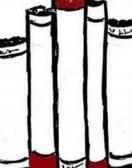As fellow fans of architectural Dublin will know, Open House Dublin fell in the first weekend of October (Friday 4th – Sunday 6th). I’ve mentioned Open House before on The Landing since it’s one of my favourite cultural events. As usual many buildings of architectural merit across a wide variety of age and purpose were open to the public at no charge. Guided tours to buildings such as The Chocolate Factory, the Lighthouse Cinema and the Alliance Française were on offer as well as government, institutional and educational buildings. Some tours were available by public lottery only (such as for Freemasons Hall) but unfortunately I wasn’t geared up enough in time to enter. Maybe next year I will be better organised; I picked up the map and leaflet in good time but failed to follow-up. Having said all of that, we had a good day of building bagging despite the lack of forward planning and we went home quite satisfied (and very footsore) with our discoveries.

A view of the front on Kildare Street
Our last port of call on a busy day was to the Department of Industry and Commerce building on Kildare Street where we just squeezed onto Open House’s final tour. We were really lucky because the organisers took double the optimum number of people round so as not to leave anyone out. We certainly fared better here than at Earlsfort Terrace where the volunteers were saying they were booked out for the last tour. I couldn’t help wondering whether it would have really hurt them to allow a few extras since they were turning away enthusiastic visitors. That’s one to bookmark for next year’s event I suppose. Anyway, back to the over-subscribed government building tour.
The tour was conducted by Angela Rolfe, an OPW architect who wrote a book to commemorate the fiftieth anniversary of the building and so is therefore an expert on the construction and features of the purpose-built (completed in October 1942) government building. The building was designed by J.R. Boyd Barrett and the building contractors were John Sisk & Son. It now houses two departments: the Department of Jobs, Enterprise and Innovation and the Department of Arts, Heritage and the Gaeltacht. I have to admit that apart from the interest of seeing the interior features of a building that I wouldn’t normally be able to enter; there is a certain degree of plain nosiness in wanting to peek behind the scenes. Not that you get to see anything shocking, apart from the possibilities of seeing who has the untidiest office and leaves dirty coffee cups around. And in fact, it was all pretty tidy by and large.
The interiors still have most of the original features, apart from it seems some alterations to facilitate modern health, safety and fire regulations. Sadly, the glossy finish on the Australian walnut panelled walls has been a victim of this since the surface was deemed to be a fire hazard. The panelled lobbies and minister’s corridor are still impressive but the walls must have looked wonderful without the more practical matt finish. The craftsmanship of the whole building was very much in evidence as also was the obvious care with which the building has been looked after during its seventy-one years. The sash windows still function and the specially made linoleum is still in pristine condition. But then it was pretty posh lino in the first place I suppose, no bargain basement stuff here. The building seems to have been well designed for the benefit of the people working there and not just for appearances sake, with attention paid to the quality of lighting, space and ventilation.

Gabriel Hayes’ design
I was interested in trying to obtain a copy of Angela Rolfe’s book (47 pp, Office of Public Works, 1992,) but it seems to be quite hard to track down. The only copy I found was listed on ABE Books as a first edition at €25 which is rather more than I wanted to pay. I might just have a look at the copy in the National Library instead. I can’t find an image of it to post up either so I’ve added a picture of the building and a link to the National Inventory of Architectural Heritage instead, so that you can see a couple of shots of the carved exterior panels by Gabriel Hayes (1909-78). There’s also more detail about the features of the building if you want to read more. Gabriel Hayes had a long career and amongst many achievements, she designed some of the decimal coins, brought out in 1971 (see picture attachment page for more information).
I’ll be back with more Landing Challenge book news soon but I’d love to hear if anyone else in Dublin was touring the city for Open House this year so drop a line in the box if you have any news…
Picture credits: Wikipedia, with thanks.

